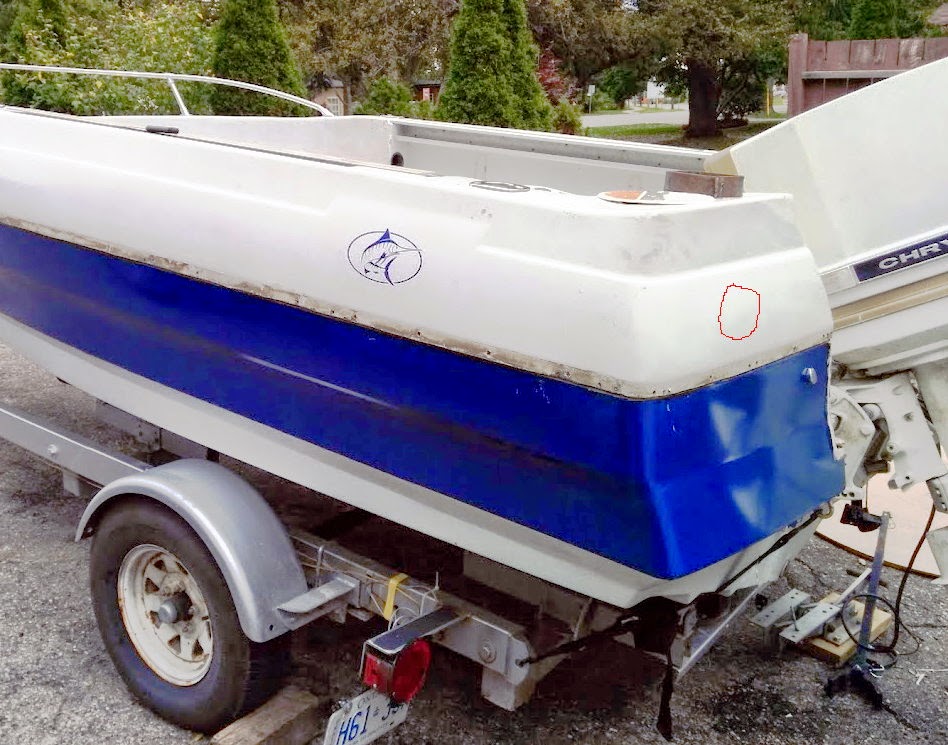Need to replace the scupper hose,
and the drain hose from the forward compartment to a through hull. Also, will need new fuel hose
since I'm moving the fill.
Should I just buy extra fuel hose (1.5" same as scuppers) for the scuppers, or is there significantly cheaper reinforced hose that can be gotten? Marine fuel hose is *not* cheap.

And, any tips on where/what to get the forward drain hose (3/4")?
I'm looking at Marelon through hulls for the forward drain and the livewell feed. Don't really trust the $30 aerator pump below the waterline,
so planning to put a valve between the through hull and pump. Would be unimpressed if the cheap plastic broke on the pump and I started taking on water.
Arawak, I have been silently following you progress and admiring the collaboration between you and your old man. You are very lucky indeed to have this opportunity to work with him on a project as involving as this one.
I have few comments/thoughts on the posted I quoted above..
First, let me start by moving the fuel filling fitting idea. The current location has the disadvantage of being PITA to deal with in a rough sea as you indicated but it has a great advantage of keeping any spills outside the boat. Bayliners tend to burp (has fuel backflow) while fueling. Before you attempt relocating your filling fitting, consider what happen if you have a fuel backflow and where the fuel would go. Boats with a gunnel filling tends to have wide gunnels that slightly tilted toward the water and away from the boat - at least around the filling fitting - to account for the backflow situation. Do you have such gunnels? If not, maybe the transom is a better place for the new fitting?
Also, considering that you will be most likely fueling on a fuel dock which is in a marina which is always protected from rough seas by natural or manmade water break line, do you still think relocating the fitting is worth doing? Just something to think about.
Secondly, and most importantly, about using the through hulls. I am not sure what you currently have in your boat and how it is currently feed the livewell and how it gets drained. I noticed in the pictures on page one that you have a through hull fitting forward and on the port side, is this for feeding the livewell?
In any event, if you will add a
new through hull fitting to drain the livewell, you will need to make sure it is - at least - 4 inches above the fully rigged water line which is your water line with full tank of fuel, water and whatever number of people you expect to have on the boat plus any equipments or supplies.
A good enough first approximation is to add 2 inches to your natural water line (draw a line above it by 2 inches) and consider this your fully rigged water line. A through hull fitting that close to the water line must also has an adequate riser loop. This is very important to avoid reveres siphoning which - potentially - can sink boats. You might find this article interesting and informative if you need more info on the subject.
http://www.yachtsurvey.com/sinking.htm
Also, on the feed side you mentioned you will add a valve between the cheap plastic through hull fitting and the pump. Unlike bilge pump, aerator pumps takes the water from the sea and into the livewell which is in the boat. Even if you add a valve, it should allow the water to flow into the boat (the live well) in normal operation mode. This means also that if the cheap plastic through hull fitting fails, the boat will still take water. Actually, depends on where the plastic will break, the boat can still take water no matter what. I hope I misunderstood your statement and you don't really intend to use plastic through hull fitting under the water line.
To pump sea water from under water line you need to use metal seacock. I would not use anything other than the seacocks with built in shut off valves so I can turn it off in case any hoses or downstream fittings has failed.
As to where you buy your supplies, visit any local marine store in your area, they should have all the hoses and fittings, etc. Amazon is a good place to save some $$ if you can wait for the shipment and the saving is worth it, of course.
Finally, as WoodOnGlass indicated, no need to use fuel type hose in regular pluming applications. It would be unnecessary waste of money.
Best of luck to you and your father in this project.




















